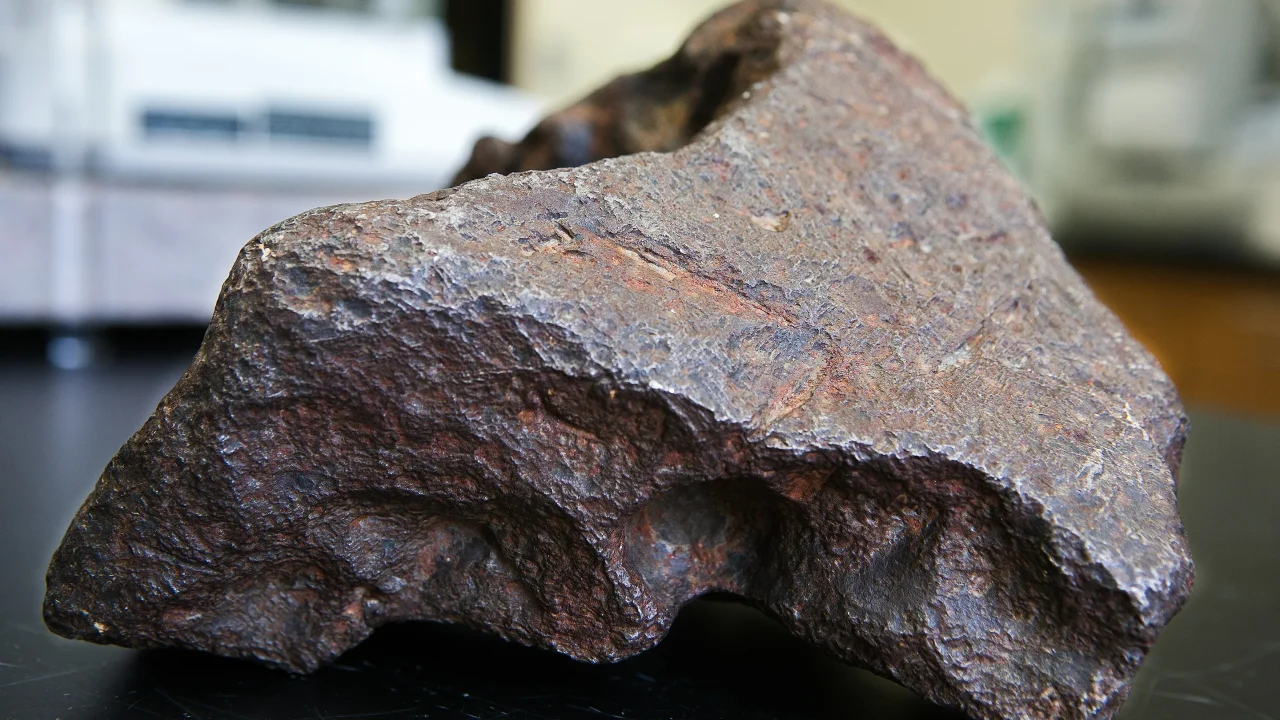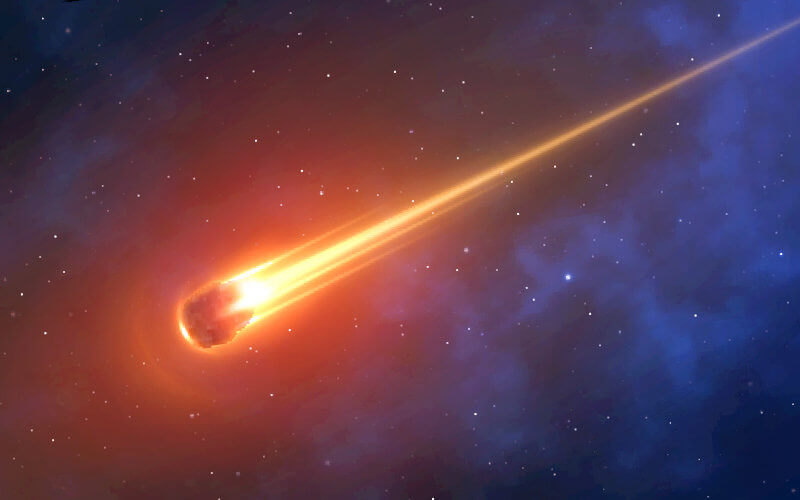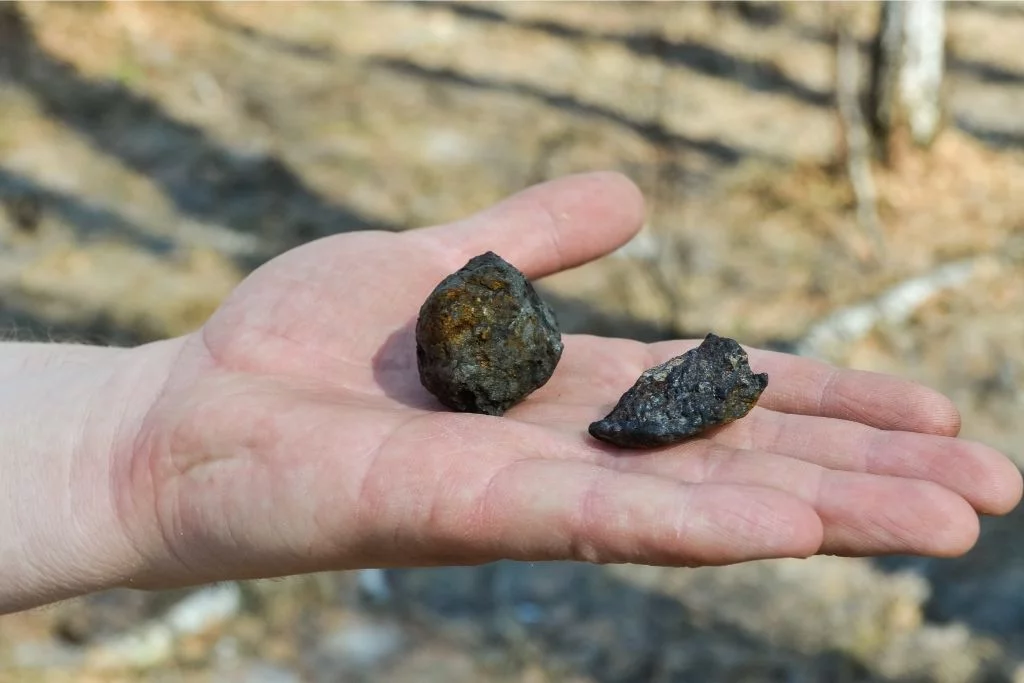
I. Introduction
Meteors are natural objects from outer space that impact the Earth’s surface. They can provide us with valuable insights into the formation and evolution of the solar system.
Chemical and mineralogical analysis is an important tool in meteorite research. It helps determine the composition and structure of meteorites, thereby providing information about their origin, history and evolution.
This article will discuss the importance of chemical and mineralogical analysis in meteorite research. We will consider the origin and formation of meteorites, the main methods of analysis, applications of analysis, the chemical and mineralogical origin of unique meteorites, and the contribution of analysis to knowledge. about cosmology and planetology, and the challenges of meteorite analysis.

II. Origin and Formation of Meteorites
Meteors form from clouds of gas and dust in space. When this cloud collapses under gravity, it forms stars and planets. The debris left over from this formation process is called meteorites.
The origin of meteorites can be classified into three main types:
Asteroid meteorites: These are fragments of shattered asteroids. Asteroids are small objects, ranging in size from a few kilometers to several hundred kilometers, located in the asteroid belt between Mars and Jupiter.
Cometary meteorites: These are fragments of comets that have broken up. Comets are objects of ice, dust and rock with long orbits, which can extend as far as the Kuiper belt.
Meteoroid debris: These are fragments of other celestial bodies that have broken apart, such as planets, satellites or meteors.
Pressure, temperature and environmental composition are factors that influence the origin of meteorites. High pressure and temperature can lead to chemical and mineralogical alterations of meteorites. Environmental composition can also influence the composition of meteorites, such as the presence of water and noble gas elements.
III. Chemical and Mineralogical Methods of Analysis
There are many different chemical and mineralogical analysis methods used in meteorite research. Some of the most popular methods include:
Absorbance spectrum: This method uses light to measure the amount of light absorbed by elements or chemical compounds in the sample.
Small particle absorption spectroscopy: This method uses light to measure the amount of light absorbed by small particles in the sample.
XRD spectroscopy: This method uses X-rays to measure the crystal structure of minerals in a sample.
Each method has its own advantages and disadvantages. For example, absorption spectroscopy can be used to determine the chemical composition of a sample, but it cannot provide information about the mineralogical structure. Small particle absorption spectroscopy can be used to determine both the chemical composition and mineralogical structure of a sample, but it requires the sample to be crushed. XRD spectroscopy can provide detailed information about the mineralogical structure of a sample, but it cannot determine the chemical composition of a sample.

IV. Applications of Chemical and Mineralogical Analysis in Meteorite Research
Chemical and mineralogical analysis has many applications in meteorite research, including:
Determining origin: Chemical and mineralogical analysis can be used to determine the origin of meteorites, such as from asteroids, comets or other celestial bodies.
Assessing the potential for a collision with Earth: Chemical and mineralogical analysis can be used to evaluate the potential for a collision with the Earth.
Studying the formation and evolution of the solar system: Chemical and mineralogical analysis can be used to study the formation and evolution of the solar system.
Studying chemical and physical processes in the universe: Chemical and mineralogical analysis can be used to study chemical and physical processes in the universe.
Studying other planets: Chemical and mineralogical analysis can be used to study other planets in the Solar System.
1. Identify the source
Chemical and mineralogical analysis can be used to determine the origin of meteorites by comparing their composition with that of other bodies in the Solar System. For example, stony meteorites often have a composition similar to stony asteroids, while iron meteorites often have a composition similar to iron asteroids.
2. Assess the potential risk of collision with Earth
Chemical and mineralogical analysis can be used to evaluate the potential impact of a meteorite with Earth by determining the composition of the meteorite and its impact rate. For example, metal-rich meteorites tend to have higher densities and are therefore likely to cause more damage if they collide with Earth.
3. Study the formation and evolution of the solar system
Chemical and mineralogical analysis can be used to study the formation and evolution of the Solar System by comparing the composition of meteorites with the composition of other bodies in the Solar System. For example, the presence of rare elements in meteorites suggests that they formed from a source rich in the element.
4. Study of chemical and physical processes in the universe
Chemical and mineralogical analysis can be used to study chemical and physical processes in the universe by determining the composition and structure of meteorites. For example, the presence of organic compounds in meteorites suggests that these compounds may have formed in the space environment.
5. Research other planets
Chemical and mineralogical analysis can be used to study other planets in the Solar System by comparing the composition of meteorites with that of other planets. For example, similarities between the compositions of meteorites and other planets suggest that these bodies may have a common origin.
In recent years, the chemical and mineralogical analysis of meteorites has improved significantly thanks to the development of new analytical methods. These new analytical methods allow researchers to gather more information about the composition and structure of meteorites, thereby helping us better understand cosmology and planetology.
V. Chemical and Mineral Origins That Make Meteorites Unique
Some meteorites have a special chemical and mineralogical composition, making them unique and interesting. Some prominent examples include:
Allende meteorite: This is a stony meteorite found in Mexico in 1969. This meteorite contains rare elements such as gold, silver, platinum, and iridium. These elements are believed to have originated from an ancient comet that collided with Earth.
Murchison meteorite: This is a stony meteorite found in Australia in 1969. This meteorite contains organic compounds, including amino acids, fatty acids and sugars. These organic compounds are believed to have originated from an ancient asteroid that collided with Earth.
Chicxulub meteorite: This is an iron meteorite found in Mexico. This meteorite is believed to have caused the mass extinction of animals and plants at the end of the Cretaceous period.
The unique chemical and mineralogical origins of these meteorites provide us with valuable insights into the formation and evolution of the solar system. They show that the Solar System is a complex and diverse place, where chemical and physical processes have created many different types of celestial bodies.
V. Contributions to Knowledge of Cosmology and Planetology
Chemical and mineralogical analysis of meteorites has contributed significantly to our knowledge of cosmology and planetology. It has helped us better understand:
Formation and evolution of the solar system: Meteorite analysis has helped us better understand the formation and evolution of the solar system. It suggests that the solar system formed from a cloud of gas and dust, and that meteorites are remnants of this formation process.
Chemical and physical processes in the universe: Meteorite analysis has helped us better understand the chemical and physical processes in the universe. It shows that meteorites contain many different types of chemical compounds, and that they have undergone many chemical and physical changes during the formation and evolution of the solar system.
Other planets: Meteorite analysis has helped us better understand other planets in the solar system. It suggests that other planets may contain similar minerals and chemical compounds to Earth.
VI. Challenges in Chemical and Mineralogical Analysis of Meteorites

Chemical and mineralogical analysis of meteorites is a complex and expensive process. There are a number of challenges and limitations in analyzing meteorites, including:
Data accuracy: Meteorite analysis requires the use of sophisticated equipment and methods. The accuracy of analytical data can be influenced by many factors, such as sample quality, instrument sensitivity, and analyst skill.
Sample diversity: Meteorites can have a wide variety of chemical and mineralogical compositions. This makes meteorite analysis more difficult, as different analysis methods may be appropriate for different types of meteorites.
Researchers are working to overcome these challenges. New analytical methods are being developed to improve the accuracy and efficiency of meteorite analysis. New techniques are also being developed to make meteorite analysis easier, such as using portable analysis devices.
With the development of new analytical methods, chemical and mineralogical analysis of meteorites will continue to contribute significantly to our knowledge of cosmology and planetology.

